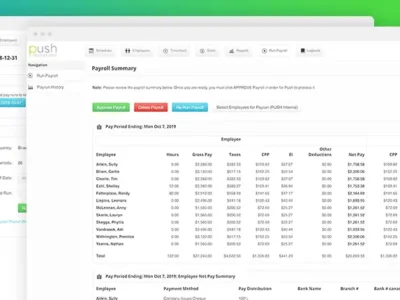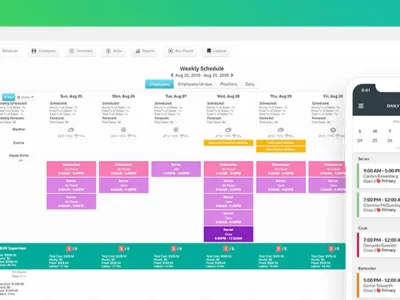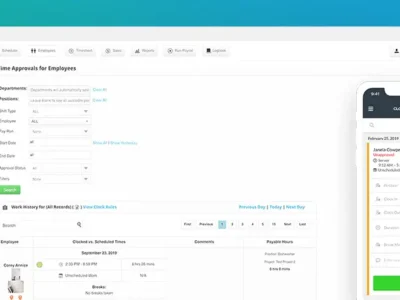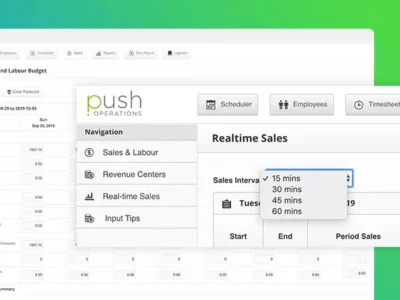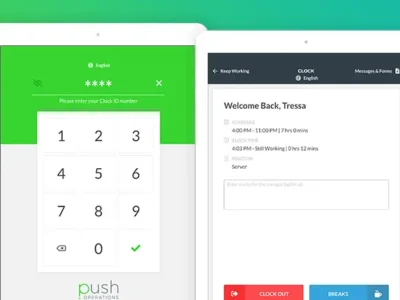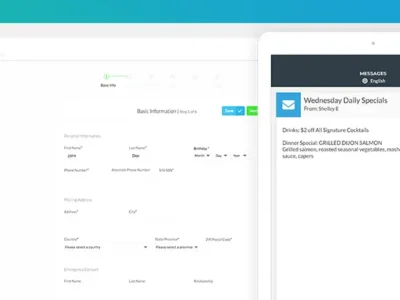What is Push Operations?
Push Operations is a cloud-based restaurant labor management platform designed to help HR managers and recruiters automate processes for streamlining payroll, time tracking and task scheduling. Key features include onboarding, remote access, sales forecasting, staff communication, role-based access and regulatory compliance.
Teams using Push Operations can handle automated calculations of employee holiday pay, hourly pay and premium pay including overtime, along with applicable provincial, state or federal taxes to ensure regulatory compliance. It comes with a camera time attendance functionality which allows users to track hours of employees, as well as alert managers about rest period, late starts, early clock-ins or staying past scheduled time.






